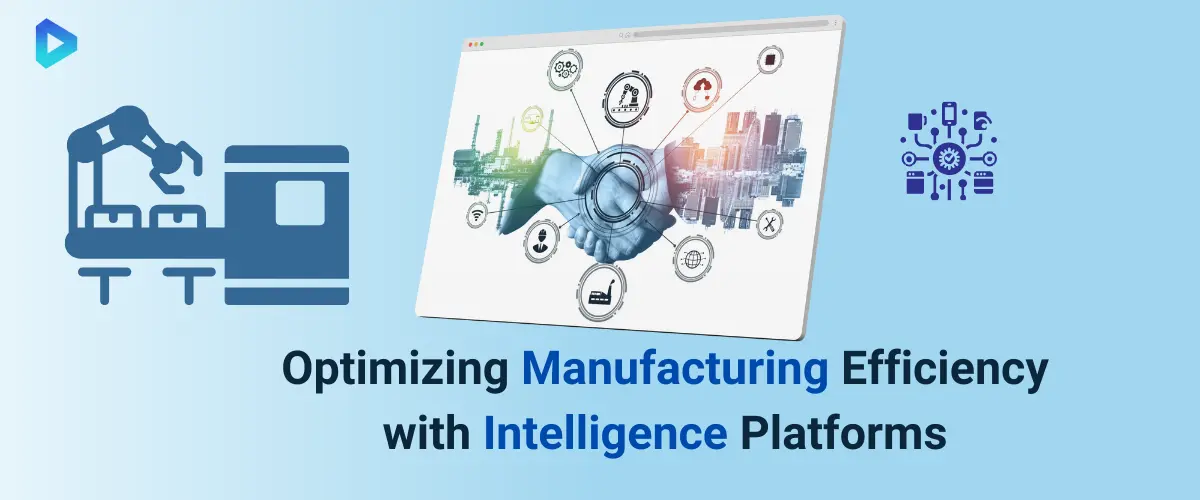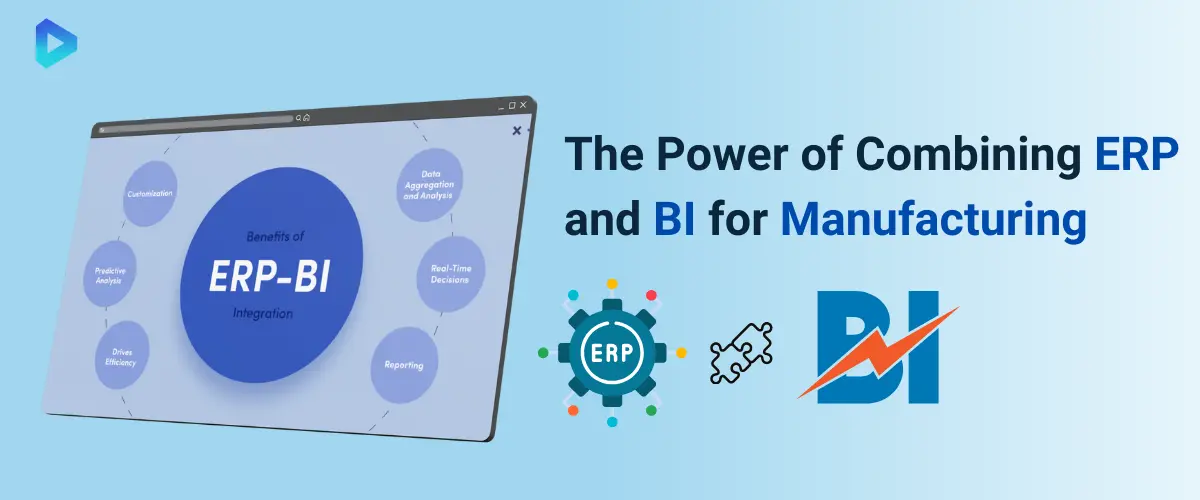Leveraging Platform-Based Manufacturing Intelligence for Efficiency
Platform-based manufacturing intelligence drives operational efficiency by delivering real-time insights, streamlined processes, and improved decision-making.

Key Features of Platform-Based Manufacturing Intelligence
Manufacturing intelligence platforms offer tools designed to streamline operations and improve decision-making. Key features include advanced data integration capabilities that consolidate information from various production systems. Analytics dashboards provide real-time performance metrics, enabling swift identification of inefficiencies. These platforms often support predictive analytics, which helps anticipate equipment failures or production bottlenecks. With cloud connectivity, data can be accessed anywhere, enhancing collaboration among teams. Ultimately, these features equip manufacturers with actionable insights to drive efficiency and innovation across the production process.
Benefits of Real-Time Insights in Manufacturing Platforms
Real-time insights are a cornerstone of modern manufacturing intelligence platforms. By providing up-to-the-minute data, these tools help organizations react quickly to production anomalies, minimizing downtime. They enhance visibility across all production stages, ensuring better resource allocation and inventory management. Real-time insights also allow for proactive decision-making, reducing waste and improving product quality. Moreover, such platforms enable seamless monitoring of key performance indicators (KPIs), helping businesses meet their operational goals efficiently. This continuous flow of data empowers manufacturers to stay competitive in a fast-paced industry.
How Intelligence Platforms Improve Production Quality
Manufacturing intelligence platforms play a crucial role in enhancing production quality. These tools offer detailed analytics on production processes, identifying areas prone to defects. With predictive maintenance features, they ensure equipment operates at peak efficiency, reducing the likelihood of errors. Enhanced tracking capabilities allow for monitoring product quality at every stage, from raw materials to final delivery. Moreover, real-time alerts ensure immediate corrective action when quality standards are compromised. By leveraging these platforms, manufacturers can meet stringent quality requirements while maintaining operational efficiency.
Understanding the Business Intelligence Maturity Model
The Business Intelligence Maturity Model assesses a company’s progress in leveraging data for strategic decisions.

Stages of the Business Intelligence Maturity Model
The BI maturity model consists of several stages, starting with the foundational phase, where businesses adopt basic data collection practices. The next stage involves developing structured reporting systems to track operational metrics. As maturity progresses, businesses incorporate advanced analytics tools, enabling predictive and prescriptive insights. The final stage achieves a fully integrated intelligence system where data drives strategy and innovation. Understanding these stages helps organizations identify their current position and plan actionable steps to advance their BI capabilities.
Why Maturity Models Matter in Manufacturing Intelligence
Maturity models provide a framework to evaluate a manufacturer’s ability to utilize data effectively. They reveal gaps in current intelligence systems, guiding investments in technology and training. By mapping progress against maturity benchmarks, manufacturers can prioritize initiatives that yield the highest ROI. Moreover, a mature BI system enhances production efficiency, minimizes waste, and aligns operations with market demands. These models are essential for ensuring long-term competitiveness in an industry increasingly reliant on data-driven decision-making.
Strategies to Advance BI Maturity in Manufacturing
Advancing BI maturity requires a combination of strategic initiatives and technological upgrades. Manufacturers should invest in advanced analytics tools to enhance data processing capabilities. Establishing a data-driven culture through employee training and cross-functional collaboration is equally vital. Integrating BI tools with existing manufacturing systems ensures seamless data flow, while adopting predictive analytics elevates decision-making capabilities. Regularly assessing progress and revising strategies based on maturity benchmarks further accelerates advancement, enabling manufacturers to achieve operational excellence and strategic agility.
Integrating Manufacturing ERP and Business Intelligence Systems
Combining ERP and BI systems revolutionizes manufacturing by unifying data for enhanced decision-making and operational efficiency.

How ERP and BI Work Together in Manufacturing
ERP systems streamline manufacturing processes by managing core operations such as supply chain, inventory, and production planning. When paired with BI tools, these systems go beyond operational management by offering detailed insights into performance metrics. BI tools analyze ERP-generated data, providing manufacturers with real-time dashboards, predictive analytics, and performance trends. This integration enables companies to anticipate challenges, optimize resources, and align operations with strategic goals. By combining ERP and BI, manufacturers gain a comprehensive view of their processes and actionable insights for continuous improvement.
Key Benefits of Combining ERP with Business Intelligence
Integrating ERP and BI systems provides manufacturers with significant advantages. First, it ensures real-time access to critical data, improving decision-making speed and accuracy. BI tools enhance ERP capabilities by generating in-depth reports and visual analytics, making data interpretation simpler and more impactful. The integration supports predictive analytics, helping manufacturers forecast demand, reduce costs, and optimize workflows. Additionally, it aligns cross-departmental efforts, creating a cohesive operational strategy that minimizes silos and fosters collaboration. These benefits position manufacturers for long-term growth in an increasingly data-driven industry.
Selecting the Right ERP-BI Integration for Your Needs
Choosing the right ERP-BI integration involves evaluating business requirements and technology compatibility. Manufacturers should assess their current ERP system’s capabilities and identify gaps that BI tools can address. Scalability is crucial—select a solution that grows with your business. Look for BI tools that integrate seamlessly with your ERP system to avoid data silos and ensure consistent information flow. Prioritize user-friendly dashboards and customization options to meet unique operational needs. Partnering with experienced vendors for implementation and support further ensures a successful integration tailored to your manufacturing goals.
Enhancing BIW Manufacturing Processes with Intelligence Tools
BIW manufacturing processes thrive with intelligence tools that improve workflows, optimize production, and reduce operational costs.

Role of BIW in Manufacturing Optimization
The Body-in-White (BIW) stage in automotive manufacturing focuses on assembling the car’s skeletal framework. This process is critical, as it directly affects structural integrity, weight optimization, and crash safety. BI tools enhance BIW processes by providing real-time data on welding precision, material usage, and assembly performance. With advanced analytics, manufacturers can identify inefficiencies, reduce defects, and enhance quality control. BIW manufacturing optimization ensures that every stage aligns with stringent standards, boosting overall production efficiency while meeting customer and regulatory expectations.
Tools for Streamlining BIW Manufacturing Workflows
Intelligence tools, such as IoT sensors and AI-driven software, revolutionize BIW workflows. IoT sensors monitor machinery performance, welding precision, and part alignment in real-time, reducing downtime and errors. AI-driven software analyzes historical data to optimize welding sequences and improve robotic automation efficiency. Digital twins create virtual replicas of BIW processes, enabling predictive maintenance and workflow simulations. By streamlining workflows, these tools reduce lead times and enhance operational consistency, ensuring that manufacturers meet production goals with superior quality standards.
Achieving Cost Efficiency with BIW Process Intelligence
Cost efficiency in BIW processes is achieved by reducing material waste, minimizing downtime, and improving energy efficiency. BI tools enable manufacturers to analyze production data to identify bottlenecks and optimize resource allocation. Predictive analytics help prevent costly machinery failures, while process automation reduces reliance on manual intervention, lowering labor costs. Additionally, energy-monitoring tools track consumption, enabling manufacturers to implement energy-saving strategies. These intelligence-driven approaches not only improve the cost-effectiveness of BIW processes but also contribute to sustainable manufacturing practices.
What Is BI in Business? An Overview
Business Intelligence (BI) transforms raw data into actionable insights, enabling data-driven decisions and optimized manufacturing operations.

Core Concepts of Business Intelligence in Manufacturing
BI in manufacturing focuses on using data analysis tools and processes to gain operational insights. It involves collecting, processing, and visualizing data from various sources, including production lines, supply chains, and customer feedback. BI tools help manufacturers monitor key performance indicators (KPIs), identify bottlenecks, and predict future trends. By leveraging these concepts, companies can optimize workflows, enhance quality control, and increase profitability. The core idea of BI is to turn complex datasets into clear, actionable strategies that improve efficiency and competitiveness.
Applications of BI in Data-Driven Manufacturing
BI applications in manufacturing span diverse areas such as predictive maintenance, inventory optimization, and quality assurance. Predictive analytics powered by BI tools forecast equipment failures, reducing downtime and maintenance costs. Advanced dashboards provide real-time insights into inventory levels, ensuring better stock management and avoiding delays. BI also plays a critical role in monitoring product quality, identifying defects, and improving production standards. These applications not only streamline operations but also enhance customer satisfaction by ensuring timely delivery and superior quality products.
Why BI Is a Game-Changer for Smart Factories
BI is a cornerstone of smart factories, where interconnected systems and data analytics drive efficiency. It empowers manufacturers to integrate IoT devices, AI, and machine learning into production processes, creating a seamless flow of real-time data. This data enables faster decision-making, adaptive production lines, and reduced energy consumption. By implementing BI, smart factories can achieve higher levels of automation, reduced waste, and agile responses to market demands. BI's role as a transformative force positions it as a critical asset for the future of manufacturing.
Power BI for Manufacturing: Insights at Scale
Power BI empowers manufacturing businesses with actionable insights, streamlining processes and enhancing data-driven decision-making for operational success.

Advantages of Using Power BI for Manufacturing Analytics
Power BI simplifies manufacturing analytics by offering real-time insights and comprehensive dashboards. It enables manufacturers to track performance metrics, such as production efficiency and equipment uptime, ensuring transparency across the supply chain. The tool’s predictive analytics help identify trends, reduce downtime, and optimize resource allocation. Its seamless integration with ERP and IoT platforms makes it invaluable for connecting data sources. With Power BI, manufacturers gain a competitive edge by improving productivity, reducing waste, and enhancing decision-making processes.
Power BI Features That Enhance Manufacturing Processes
Power BI offers features tailored to manufacturing needs, such as customizable dashboards, real-time data visualization, and AI-powered analytics. These capabilities help factories monitor production workflows, spot inefficiencies, and implement corrective measures. Its drill-down functionality enables teams to explore granular details, uncovering root causes of issues quickly. Integration with IoT devices allows for tracking machine performance, while advanced reporting tools offer actionable recommendations. These features make Power BI an essential tool for optimizing operations and driving quality improvements.
Best Practices for Power BI Implementation in Factories
Implementing Power BI successfully requires a clear strategy and proper training. Start by identifying key manufacturing KPIs to track, such as cycle times or defect rates. Ensure seamless integration with existing ERP systems to centralize data. Provide teams with training on using Power BI’s features to analyze and interpret data effectively. Regularly update dashboards to reflect evolving business priorities and maintain data accuracy. By following these practices, manufacturers can unlock Power BI’s full potential, enabling better decision-making and streamlined operations.
LET’S DISCUSS YOUR IDEA




No comments:
Post a Comment